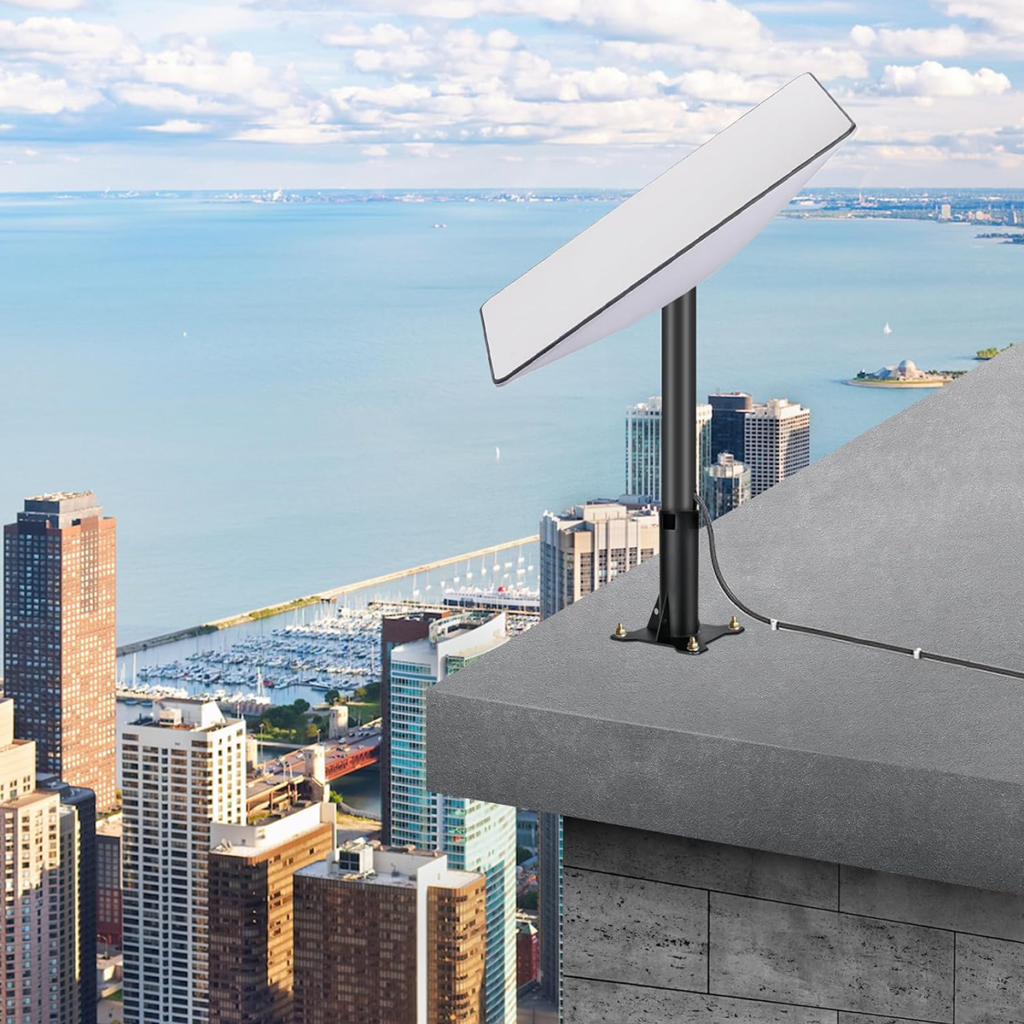Since its public beta launch in late 2020, Starlink has transformed satellite internet by providing low-latency, high-speed broadband from space. Powered by SpaceX, the service disrupted a market dominated by slow and unreliable connections—especially in rural and remote areas.
Fast forward to today, and we now have Starlink Gen 2, the second-generation hardware designed to improve upon the first. But what exactly has changed, and why should existing or new users care?
In this article, we break down the key differences between Starlink Gen 1 vs Gen 2, explore performance updates, and discuss which version is correct for different user types.
1. Design & Build: From Circular to Rectangular
Gen 1 Dish: Circular, heavier, motorized for auto-alignment
Gen 2 Dish: Rectangular, lighter, no motors (uses phased-array beam steering)
The most noticeable change is the dish design. Gen 2 features a sleek rectangular shape, measuring approximately 19 x 12 inches, compared to Gen 1’s 23.2-inch round dish. This reduces wind resistance, and the Gen 2 dish is lighter and easier to mount.
SpaceX removed the motorized components in Gen 2, opting instead for solid-state beam steering, which has fewer moving parts and, thus, less maintenance risk.
2. Performance & Speed
While both generations are connected to the same satellite constellation, Gen 2 hardware is better optimized for performance.
| Feature | Starlink Gen 1 | Starlink Gen 2 |
|---|---|---|
| Download Speed | 50–150 Mbps | 100–200+ Mbps |
| Latency | 20–40 ms | 20–30 ms |
| Hardware Sync | Motorized | Static, phased-array |
| Average Uptime | Good | Better (fewer dropouts) |
Gen 2 generally sees improved speed consistency and lower latency, especially during peak hours. The newer antenna technology allows faster satellite handoffs, making Gen 2 more stable for video calls, gaming, and HD streaming.
3. Power Consumption
One central area of improvement is energy efficiency.
- Gen 1 uses 100–120W during peak use
- Gen 2 averages around 50–75W
This makes Gen 2 much more viable for off-grid use cases like RVs, boats, and cabins powered by solar systems.
4. Wi-Fi Router Updates
Gen 2 ships with a new Wi-Fi 5 mesh-compatible router built into the power supply unit. It’s sleeker and includes fewer cables, which means less clutter and easier installation. However, it lacks an Ethernet port by default, requiring an adapter for wired connections.
| Feature | Gen 1 Router | Gen 2 Router |
|---|---|---|
| Ethernet Port | Yes (built-in) | No (adapter required) |
| Mesh Support | Limited | Yes (via mesh units) |
| App Integration | Basic | Advanced (with OTA updates) |
This is an area where some users might prefer Gen 1 if wired networking is essential out of the box.
5. Setup & Installation
Gen 2 is designed for DIY setup. The mounting options have improved with simplified kits for rooftops, poles, or mobile setups. There’s no need to wait for dish rotation to auto-align—Gen 2 starts scanning satellites instantly once powered.
This simplifies installation and makes Starlink more portable and flexible for mobile users.
6. Durability & Weather Resistance
Both versions are built to endure snow, rain, and heat. However, Gen 2 has improved thermal management and water resistance. Many users have reported better performance during hot summers and snowstorms.
- Operating temperatures: Gen 1 (–30°C to 40°C) vs Gen 2 (–30°C to 50°C)
- Snow Melt Feature: Available on both, but Gen 2 heats faster
7. Availability & Cost
SpaceX has phased out the Gen 1 dish in most regions. Today, Gen 2 is the default option for new orders.
- Gen 1 Hardware Cost: $499 (when available)
- Gen 2 Hardware Cost: $599 (current retail)
The monthly subscription remains the same, but Roaming and Portability features are more stable with Gen 2.
Who Should Upgrade to Gen 2?
| User Type | Recommendation |
|---|---|
| New Starlink Users | Go with Gen 2 |
| Off-Grid Adventurers | Strongly consider Gen 2 |
| Gamers/Streamers | Gen 2 offers better latency stability |
| Wired Office Setups | Gen 1 may be better unless you use the adapter |
| Budget-Conscious | Gen 1 (if still available) could save hardware cost |
If you’re a current Gen 1 user and your system works fine, there’s no urgent need to upgrade. But for those looking for better portability, faster installation, lower power draw, or more stable speeds—Gen 2 is the clear winner.
Final Thoughts
Starlink Gen 2 is a thoughtful evolution of already groundbreaking technology. It sets a new standard for satellite-based internet with more innovative design, improved performance, and broader use-case support.
Whether you’re building a bright cabin in the mountains, working from an RV, or replacing slow DSL in your countryside home—Starlink Gen 2 is a big step forward.
Need help installing your Starlink Gen 2 system or reviewing accessories? Stay tuned for our upcoming guides.










